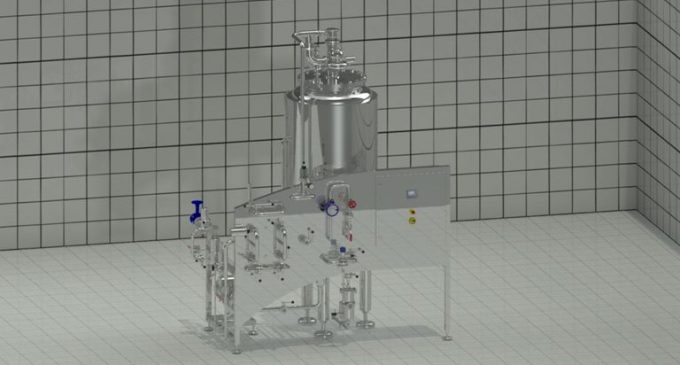GEA Develops Yeast Propagator For Craft Breweries

Just in time for the BrauBeviale, GEA is completing the development of the GEA Craft Propagator, a yeast propagation system specially designed for small and medium-sized craft breweries. With production volumes from 5 to 25 hectoliters, the propagator’s dimensions are adapted to GEA’s brewhouse solutions CRAFT-STAR™ and COMPACT-STAR™ (25 to 125 hectoliters brew size). The official sales launch is scheduled for 2019.
Yeast management for the craft market
Yeast is the most important component in beer production. It influences taste, quality and filterability. This makes it all the more important to select the right strain, maintain and propagate healthy cells and utilize the surplus yeast. In order to handle the increasing number of varieties available on the market, technical automation has intensified in recent years.
But this is exactly where craft brewers have different ideas from larger breweries. “With the GEA Craft Propagator we are responding to customer inquiries from the craft sector. We have converted our successful YEAST-STAR™, a solution for high capacity utilization with full automation, into a little sister version,” says GEA Product Manager Torben Bauch. Designed for smaller budgets and smaller capacities, it offers the same functionality as the YEAST-STAR™: gentle homogenization, highly efficient aeration and adaptive temperature control. However, it allows for more spontaneity – more experimentation via reduced automation. “All in all, we implemented a leaner design and a manual mode with some high-tech features.”
Objective: vital and highly fermentative yeast
The propagator is equipped with a recirculation pipe, an internal aeration system and a sterile air measuring unit. During the propagation phase, the yeast cells in the reaction tank are intensively supplied with oxygen in order to keep them in a state of aerobic metabolism – thus stimulating rapid growth of the yeast cell population. For best fermentation results, the yeast must be in the logarithmic growth phase exactly at the moment when it enters the fermentation tank. For this purpose, the tank is automatically aerated and the required propagation temperature is maintained. Unlike the YEAST-STAR™, assimilation takes place directly in the propagator. Temperature and aeration rate are completely adjustable.
To start the process, the cold wort is pumped from the wort cooler through the existing wort line between brewhouse and cold block into the reaction tank. The yeast suspension is then added from a Carlsberg flask with sterile air. The circulating pump ensures proper mixing and homogenization of the yeast suspension during the entire process. Aeration is performed via a vertical lance in the cone. The nozzle flow supports the homogenization effect. After propagation, the yeast suspension is introduced into the wort line with the circulating pump for filling the fermentation tank.
Craft brewers want to keep things under their own control
“We have designed some of the functions for manual operation and provide a control system tailored for this purpose. On the one hand, this matches the target group’s budget and on the other hand, corresponds to the way craft brewers want to work: No craft brewer wants to simply press display buttons and have the feeling that they are not able to intervene. Here, for example, the brewer is given the opportunity to activate the cleaning-in-place (CIP) manually,” says Bauch.
The Product Manager adds: “Yeast is the heart of the beer. Craft brewers do not always add the yeast at the same point in time during the fermentation process. Therefore, it was important to us that the yeast be in top condition after propagation – highly vital and ready for fermentation.” In addition, the propagator can conveniently be used to store the yeast crop from the large fermenters until the next propagation. Then all that remains is to cool and recirculate to keep the yeast in suspension: The yeast metabolism then goes into a kind of hibernation. GEA is currently working on further options, including a stand-alone CIP unit for breweries that do not have a CIP system.

































